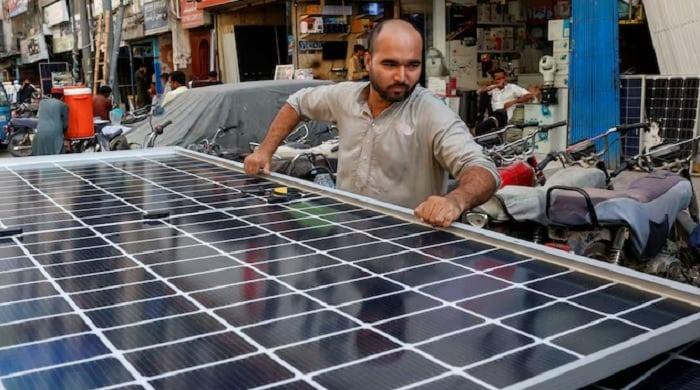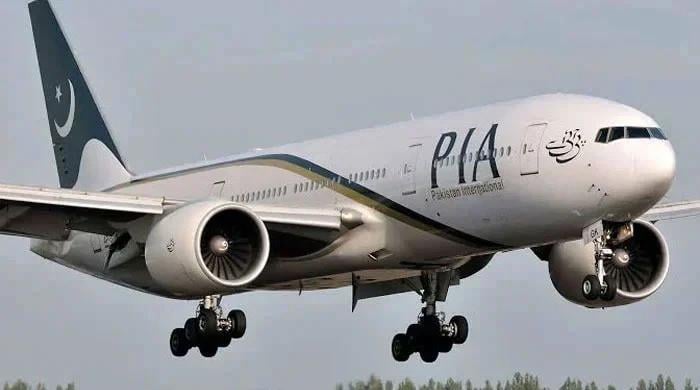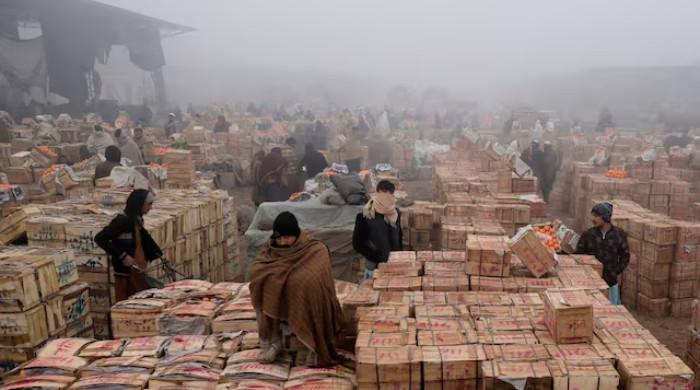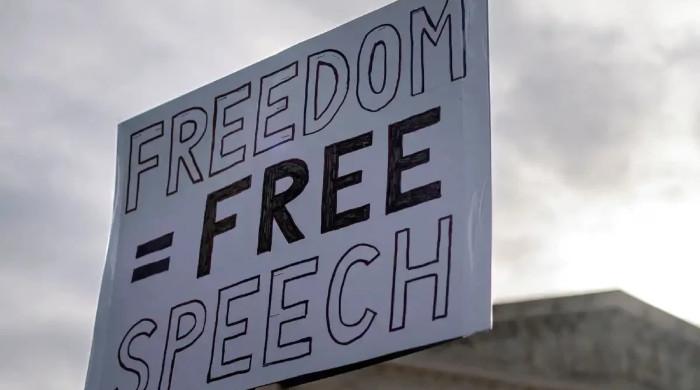PFUJ-75: Making of a 'Journalist Movement'
Union has always championed democratic values, practising them internally and supporting all democratic movements
August 02, 2024
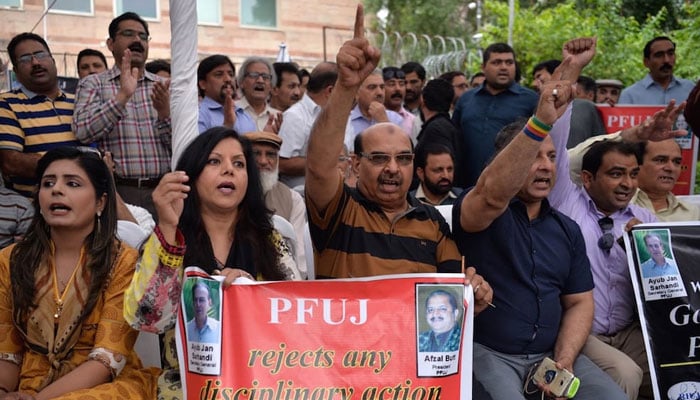
The Pakistan Federal Union of Journalists (PFUJ) has a long storied history of struggling against dictatorship and authoritarian rule. Today's challenges are nonetheless far more daunting compared to those of the past. Journalists now face physical attacks, including kidnappings, torture, and even murder, carried out by both state and non-state actors.
Successive governments have consistently gagged the media through draconian laws, and, unfortunately, with the rise of digital media, the terms 'journalism' and 'journalist' have been increasingly misused for making personal gains.
Journalism is a ‘mission’ for those committed to furnishing their fellow countrymen with the facts of the matters, upholding the public’s right to know. However, for others, it serves as a means to build personal fortunes. Tragically, the PFUJ, with its glorious history of unfaltering and unblemished struggle, has splintered into factions, complicating matters for those who remain dedicated to ‘ethical journalism’.
The Union has always championed democratic values, practising them internally and supporting all democratic movements. Let’s go down the memory lane.
Narrating the golden yet challenging days of the PFUJ, once the sole representative of the journalist community, BBC veteran Ali Ahmad Khan shared a moving story about former PFUJ president Nisar Usmani. It was the time when the 1978 Journalist Movement was in full swing, and Usmani sahib was underground due to an arrest warrant issued by the government. News about his wife’s illness was published in a newspaper, prompting Prof Ghafoor Ahmad, deputy emir of Jamaat-e-Islami and a highly respected politician, to approach him (Ali Ahmad Khan) and request a secret meeting with Usmani sahib. Ghafoor sahib wanted to seek Usmani sahib’s consent to urge the rulers to withdraw the arrest warrant so Usmani could care for his ailing wife.
The meeting was arranged, during which Ghafoor sahib pleaded with Usmani sahib to give his approval. However, the PFUJ president politely declined, urging Ghafoor sahib to instead ask the government to accept the federation’s demands and lift the ban on Daily Musawat, making it clear he did not want any personal favour.
“Ghafoor sahib was so pleased with the reply that he later told me, ‘If all organisations have such leaders, their movements never die,’” Khan recounted.
The history of the PFUJ is punctuated by both good and bad days, as it remains the only body in the country that has stood tall against every military dictator and authoritarian civilian regime. This resilience is unique and unprecedented in our chequered political history.
During the 1970-71 political crisis in East Pakistan, now Bangladesh, the late Sheikh Mujibur Rahman, leader of the Awami League, invited KG Mustafa, the leader of the PFUJ, to join his party during a press conference in Dhaka. He also offered him a party ticket for the 1970 elections. Mustafa declined, saying: “I look for a better future as a journalist and union activist.” Mustafa later became the last president of the PFUJ, which remained intact for six months after the creation of the new state, Bangladesh.
In the 1950s, the PFUJ first proposed Article 19 in the Constitution and consistently demanded the abolition of all oppressive media laws from the pre-Partition era. The Union's history is replete with stories worth telling. It is because it not only fought for journalists' and union’s issues, but also dared to stand up for matters related to democracy, and human and civil rights.
At the PFUJ's demand, the government constituted a Press Commission headed by a judge in the late 1950s. The Commission submitted a comprehensive 400-page report, which later led to the formation of the first Wage Board for working journalists.
The PFUJ also stood with the oppressed and opposed decisions such as the One Unit scheme. It publicly condemned the March 23, 1971, military operation in East Pakistan. However, its first full-fledged struggle was against the Press and Publication Ordinance of 1960, which was amended in 1963. Under this ordinance, the government took control of many independent newspapers, including Progressive Papers Limited, which published six newspapers, including Daily Imroz and Pakistan Times. This was the first blatant attack on the freedom of the press and an attempt to suppress independent media. The PFUJ's movement was also supported by the Council of Pakistan Newspapers Editors (CPNE).
In 1970, the PFUJ observed a complete strike to protest the non-payment of interim relief as mandated by the Wage Board. The strike followed a countrywide referendum conducted by journalists from West to East Pakistan. With 95% of members supporting the referendum, a nationwide strike was called, lasting a full 10 days from April 16, 1970. During the strike, protest camps were pitched outside major newspaper offices to ensure its success and to thwart any bids to break it — which were made by the opposers.
In 1973, responding to the PFUJ's calls, the government agreed to include non-journalist newspaper workers in the Wage Board. Consequently, the Newspapers Employees (Conditions of Services) Act, 1973, was unanimously passed through an amendment.
The PFUJ also opposed former prime minister Zulfiqar Ali Bhutto's decision to ban the Daily Jasarat and other right-wing newspapers and magazines. Additionally, the PFUJ condemned the arrest of editors and journalists and expressed disappointment with Bhutto's decision not to abolish the Press and Publication Ordinance.
However, PFUJ's historic struggle scaled new peaks under the most oppressive rule of General Ziaul Haq, as the military dictator sought to impose complete censorship to suppress independent voices. He even publicly warned journalists that if he banned all newspapers for a few years and hanged some dissenting voices, ‘no one would dare to speak.’ Nevertheless, the PFUJ proved him wrong.
Even when political parties were undecided on how to oppose Zia, it was the PFUJ that launched the struggle for the restoration of the Pakistan Peoples Party (PPP)-backed Daily Musawat. Nearly five months of struggle are marked by remarkable stories of how journalists endured imprisonment with high spirits. Four of them — Masoodullah Khan, Nasir Zaidi, Iqbal Jaffery, and Khawar Naim Hashmi — were sentenced to 10 lashes each. On the doctor’s advice, Masoodullah was spared from the whipping owing to his deteriorated health, but the other three were flogged at Kot Lakhpat Jail. Despite their excruciating ordeal, they all raised the slogan, Azadi-e-Sahafat Zindabad and refused to bow down to the authoritarian regime.
The movement was later joined by the Sindh Hari Committee in solidarity and their workers also courted arrest. Each journalist and worker who went to prison has a story to tell.
After a long struggle under Prime Minister Mohammad Khan Junejo's government, the Press and Publication Ordinance was replaced. Although the situation of the press did improve, black media laws remain in place, and the situation has worsened with the introduction of additional restrictive measures, such as PECA-2016, and undeclared control over other media sectors.
The PFUJ’s last epic battle was against General Pervez Musharraf’s decision to ban several talk-show anchors, including Hamid Mir, Asma Sherazi, Kashif Abbasi, Nusrat Javed, and Talat Hussain. Many news channels were taken off the air. In response, the PFUJ launched an 88-day struggle, establishing a permanent protest camp in Islamabad. The federal government registered cases against 200 journalists and also targeted the PFUJ as an organisation, with rumours of a potential ban on the Union. In Karachi, police arrested 150 journalists during the processions, but the movement continued with resolute unity.
The PFUJ, which was formally established in Karachi on August 2, 1950, has decided to celebrate the Union’s ‘Platinum Jubilee’ throughout the year, from August 2, 2024, to August 2, 2025, across the country. The celebrations will recall the gallant struggle for the three basic principles laid down in the Union's Constitution: (1) Struggle for freedom of the press; (2) Fight for the welfare of journalists and other media workers; and (3) Improve journalist’s professional excellence.
However, the journey was never easy. Not long after the creation of Pakistan, the new government banned dozens of newspapers and magazines and arrested some editors and journalists in 1948. During this period, the Sindh Union of Journalists (SUJ) launched a movement to address these challenges.
Reckoning that the then government’s media-gagging drive warranted a unified voice, journalists began to consider forming a nationwide union. The then SUJ president MA Shakoor, general secretary Asrar Ahmad, and others decided to hold a meeting in the hall of SM Law College, as there was no press club or suitable venue available at the time. The college principal permitted them to hold their meeting in the college hall. However, the journalists found the college gate locked the following day, with the principal also standing outside. It transpired that the educational institute’s administration had banned the journalists’ meeting on orders from the 'top’.
The PFUJ was formally launched at a grand convention held at Khaliq Dina Hall. Although Prime Minister Liaquat Ali Khan was unable to attend, he sent a message that was read by then-foreign minister Sir Zafarullah Khan.
The PFUJ's 75-year history is a testament to those who still have faith in ethical journalism. It presses ahead with its struggle against successive regimes and also fights internal challenges, while some continue to exploit the profession for personal gain, under the guise of journalism.
The writer is a columnist and analyst for Geo, Jang and The News. He posts on X @MazharABbasGEO
Disclaimer: The viewpoints expressed in this piece are the writer's own and don't necessarily reflect Geo.tv's editorial policy.




